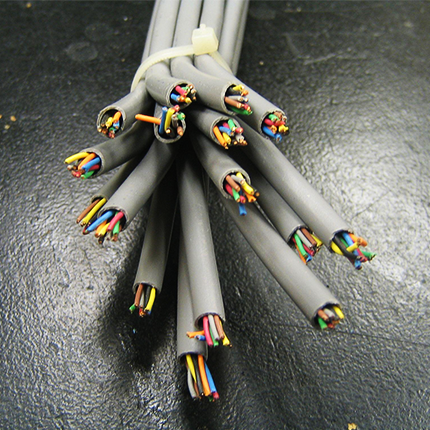Hey! I’m currently on Fedora Workstation and I’m getting bored. Nothing in particular. I’ve heard about immutable distros and I’m thinking about Fedora Kinoite. The idea is interesting but idk if it’s worth it. CPU and GPU are AMD. Mostly used for gaming.
I can’t recommend Silverblue enough.
Thing is: on the “surface” it’s not that much different than the “normal” Fedora and it’s spins.
So, if you want something hugely different on the base, I’d recommend NixOS instead. Nix feels like “the new Arch” for me and is the tinkerer’s dream. It appears to be very complicated too, so it should keep you “not bored” as you said.
I personally wouldn’t use NixOS though, as I am just a “casual” user and don’t want to over-complicate everything.I personally am very happy with Silverblue, especially due to one reason: the ability to rebase to many many images.
As other commenters have stated, there’s a project called uBlue.
It allows you to swap out the base OS (everything except “your stuff”) with one command, so you can rebase to many different community spins and different desktops cleanly.The uBlue base OS is just Vanilla SB with some QOL stuff added, like codecs and other stuff. It is really a “just works” distro, that manages itself and functions in the background without you noticing.
The other spins give you different DEs, preconfigured drivers, opinionated approaches to different DEs, a SteamOS clone, and so on…
Absolutely great, 10/10
I might try Nix first and see how it goes, if that fails I’ll try Kinoite (I prefer KDE :)) thanks for the input :)
If you want to try Nix, go for it!
Feel free to update us all :).When I said Silverblue, I actually meant “atomic Fedora variants”, which include uBlue and Kinoite. You can always switch between those with one command and 2 minutes of download time :)
Well, actually this is not the first time me thinking about NixOS. But I tried reading their docs again and… I CANNOT be asked to deal with this. I’d probably be more likely to do LFS than learn NixOS lol I feel stupid now, saying I’ll try NixOS. As much as I want to, the docs are horrendous
tbf the docs are in the format of manuals, i.e. only useful if you already know what you’re looking for or have lots of time. If you don’t, read blog posts and nixos.wiki.
I jumped. I replaced workstation with silverblue. It feels like installing the early version of the future of linux. From an enduser perspective you do not gain too much going from workstation to silverblue. Yet only if you were already using flatpaks a lot. Installing software into the OS becomes more difficult which is the point. It’s not good for tinkering. For tinkering you should use arch. Reducing the possibilities to fuck up the system sounds great for the end user. I love that you can remove everything but from a business point of view and the responsibility I have when recommending an OS, immutability is great. Moreover it’s more difficult to install snap which is good as well.
deleted by creator
Here’s secure boot for NixOS: https://github.com/nix-community/lanzaboote/
deleted by creator
I’m not sure what you mean exactly but I use Silverblue with secureboot on and a LUKS encrypted drive using a fido2 key. To my knowledge I also could configure the use of TPM to store my key but find that setup not to my liking.
deleted by creator
My (maybe flawed?) thoughts: Why bother with full disk encryption if one could just boot the notebook to undo the encryption?
Using my yubico fido 2 key in combination with a small PIN I can easily decrypt my LUKS drive and know nobody else can decrypt it as long as I have my yubico with me.
What do you think of this?
deleted by creator
I believe Universal Blue supports Secure Boot, since they specifically went to make it work for even Nvidia users - I’m assuming it works similarly for the non Nvidia variants or maybe just uses Fedora’s default keys? I’m not too well versed in how SB works.
Then it also comes with Distrobox so you can just spin up an Arch container and use AUR apps through there.
deleted by creator
Ah gotcha, I appreciate the info! I hope that someday a better solution for managing secure boot will work with immutable distros in the future then, so that you have a chance to give it a try (if you want to, of course).
deleted by creator
I’ve been using Kinoite for a couple of years now on my Thinkpad. What would you like to know?
How much did you have to adapt to the new app installing workflow? If you know what I mean
If nearly all of your gui apps are available as a flatpak, it’s simple to adapt. While I was using Silverblue I set my terminal up to launch directly into a distrobox, which gave me a regular container to install apps with a regular package manager (e.g. pacman in my case).
If I used Silverblue today I’d use the Nix package manager (with home manager) to install all my cli apps.
I learned quickly that installing apps the traditional way causes pretty major instability. You’re basically rebasing the entire OS via ostree to install one application. After my second nuke and pave due to updates no longer working from me rebasing I took the time to learn toolbox so if a flatpak is not available I can still use an application (containerized) without altering the OS. Toolbox by default pulls in another Fedora install as the app base. I recommend using Alpine instead, much smaller and lighter.
I guess the moral of the story is learn to install applications the correct way, or just don’t use an immutable OS
Noted haha I’ll think about if I want to use Kinoite, Nix is first place rn I think haha
There are many good comments here and from what I’ve read immutable seems best suited to the Enterprise IT environment where you don’t want the user fiddling with the system, and you want built in rollback and quick configuration. As well as user data protection.
But for Linux users at home I don’t see any massive advantage. Especially if you’re running a reliable distro like Mint or Debian, or better yet Linux Mint Debian Edition is the best of both worlds.
If you only turn the PC on to watch YouTube, read a document, scan and print, surf the web or game your system should be 100% ok. Unless you’re running Manjaro or Arch.
What I don’t like about the immutable approach is that it turns my PC into a dumb terminal locked by the distro Devs and updated at their will. It’s ok if I have read only on my Android phone because I don’t need to get into root etc. That’s a good place for immutable.
But I don’t want my Linux box at home to be a just an appliance that someone else essentially has control over.
That’s very much an Apple approach. Don’t let the user see or touch anything. They can just be content to change the wallpaper and add a widget. We’ll decide when and how the OS gets updated, what apps they can and cannot run etc.
Ultimately it infringes on user freedom and the very FOSS principles that set Linux apart from the rest.
In short, fine for Enterprise IT but no good for the average Linux user.
You make a lot of good points, but I have to disagree on the “don’t let the user see or touch anything”. That’s very much not the way immutable distros behave (and I speak mostly about Fedora Silverblue here, I don’t have experience with other immutable systems): you can touch and change anything and often times you have mechanisms put in place by the distro developers to do exactly that. It’s just that the way you make changes is very different from classical distros, that’s all, but you can definitely customize and change whatever you want. I feel the comparison between immutable distros and Apple is really far off: Apple actively prevents users from making changes, while immutable Linux is the opposite – while there may be some technical limitations, the devs try to empower the user as much as possible.
Thanks for replying. It seems that my impression of immutable might be off. I’m glad to hear you actually can make changes.
I assume the must be some kind of core trust can’t be changed? Or does the immutable name refer simply to the ability to roll back?
The immutable part (again, only speaking about Silverblue, I don’t know about others) refers to the inability to make changes online (i.e. without rebooting), but you can eventually change whatever file you want. The way it works is you would make your changes in a copy of the current filesystem and at boot simply mount and use the copy. If something goes wrong, you just mount the original at next boot and you have rolled back.
Fantastic. Thanks for explaining that to me. That actually sounds very good and not at all restrictive. Cool. I can see why things are moving in that direction.
If you do a rollback, I assume your data remains? I assume you might need to reinstall apps which were not in the original? Or does it keep apps, data and settings across a restore?
If you do a rollback, I assume your data remains? I assume you might need to reinstall apps which were not in the original? Or does it keep apps, data and settings across a restore?
In CoreOS (Silverblue),
/etc,/varand/home(which is in fact a symlink towards/var/home) are regular writable partitions, so your data, configs and personal files are not touched by the upgrade/rollback procedure.All the packages (and their dependencies) you’ve installed extra are also upgraded/rolledback when you do a system upgrade.
Fantastic. That’s cool. Thank you 🙏
What I don’t like about the immutable approach is that it turns my PC into a dumb terminal locked by the distro Devs and updated at their will.
I think you are misunderstanding how immutable distros work. They can be just as configurable as regular distros and in the case of nixOS it is more configurable than popular distros. The point of immutability is to ensure that the system can’t be broken during when it is running by a bad update or install or by user making configuration errors as these are applied during reboot. If the system is broken then a earlier snapshot is booted so you always have a working system. You can setup a regular distro with this atomicity and snapshots but it is not as easy as using immutable distros. Yes tinkering and using native packages is harder in most immutable distros but immutables never were a catch all solution. Use what suits you. I was just a little upset that you claimed that immutables are not in the spirit of FOSS. You can even make your own images(base OS) in distros like fedora silverblue and update your system with those images instead of using what the maintainers provide. It is what uBlue uses
Thanks for the correction. 👍
Cheers. Hope you don’t shy away from trying immutable distros
I think I’ll spin up a VM and try one
deleted by creator
You can still tinker!
NixOS is pretty complicated, but in my eyes the next-gen Arch.
And Silverblue is still be able to be tinkered with.
See, on immutable systems, you don’t change the system itself, but the next image.
Similar to PDFs: you shouldn’t change the PDF, but the original document and then export the PDF again. PDFs aren’t bad, but they aren’t designed to be edited, and that’s their pro.And with Project uBlue you can create custom images how you want.
You like Hyprland? There’s an image exactly with that! You see what I mean :)
I’m not a a current user of immutable distros, but I’m in the same boat as you. Interested in immutable os’s, running fedora workstation, getting bored.
I’ve been working on independent setups to see how I’d get customization working on an immutable distro. Some combination of containers seems like how I’d go. See this explanation.
For example, I’m running a wayland system, and RemoteApp/Rails on freerdp only works with X. Xwayland is currently broken on my system (installed as fedora 39 *beta). I require this for work. I installed distrobox with debian 12 bookworm, installed the required packages and it works like a charm.
On immutable OS’sI have been watching Vanilla OS for a while. I really like what I see. I’m just not sure what the security posture of it is.
The biggest thing holding me back is Gnome 45. It’s so good. Having an independent prioritized thread for mouse/keys makes it feel so smooth.
I’ve built hyprland and begun adding all the essential pieces to make it a viable replacement for Gnome. I’m not there yet, but once I figure out ad-hoc multi-monitor support with docks, I will be.
*edit
2 points for vanillaOS. What’s the problem with their security? Also, coming from KDE, what’s that about gnome mouse thing you’re talking about? Just curious lol
I don’t have a particular problem with their security, I just don’t have a clear picture of what they’re about yet - and I don’t want to give the impression that I’ve investigated it and found everything’s in order.
Gnome’s mouse thing is about running the human input devices in a separate thread, prioritized over the rest of its spawned processes. The practical upshot is, if your system is chugging under the weight of too many programs, your input won’t be laggy
Fair enough, thanks for honesty. The mouse thing sounds sick, although I have a pretty powerful setup 😜
Yeah, the input thread priority sounds cool and it would be nice on KDE as well, but if you have a faster computer than a potato, I’ll guess you won’t be needing that kind of “optimization”.
You’d be surprised. I’ve got a mid-tier i7 laptop from 2017 and it munches through most productivity tasks.
It’s my i9 desktop that suffers when I’m running everything I want to have up. Between containers and compilers, VMs and videos, tabs and terminals, you can really put the hurt on a machine. I likely won’t be swapping until everyhing has adopted 45, or until I figure out how to make hyprland work the way I want it to
What do you mean by bored¿? Because you will be similarly bored by silverblue or kinoite. They are built to be stable and somewhat boring
Idk, I might be just trying to find something to tinker with, immutable is kind of “new flashy” thing :P
Tinkering on silverblue is similar to tinkering on fedora (at least in my experience) just more restrictive in that the read only parts can’t be changed(obviously) and tinkering with packages requires reboots and layering. The good thing is you can rollback to easily undo shit.
I think immutable OSes serve two purposes: For the developer who needs to operate multiple environments at the same time, and for the utter novice who could screw something up otherwise.
This audience, us, is the exactly middle ground. We like tinkering. We like setting things up.
So, I don’t think immutable OSes are for us.
Yeah man I don’t know. I used to think I like tinkering(used endeavour for a few months) but I am enjoying the no maintaince life with uBlue very much. Most of the time the system updates on its own and I am not even aware that the system updated. Same with flatpaks which also auto update so they are always on the latest version provided by flathub when I use them. But I also like gnome so maybe I am not the tinker lover I thought I was
Not true in my opinion.
You can still tweak the image to your liking, you just have to approach it differently.One of the many things image based OSs offer is peace of mind.
It’s just great to know my PC will work just as fine tomorrow as it did today, and I don’t have to fix anything.I can definitely see what you’re saying. But if you start to add packages, what do you gain in terms of known stability? Seems to me you might as well then just “be good” about not adding too many packages to a malleable distribution.
If you use the workflow of an immutable system on a traditional one, you have almost all the disadvantages of the first and pretty much no advantages of the second.
The “immutability” (you can still change stuff) is the wrong thing to look at.
I prefer the term “image based”, that fits better. Everytime you update your image system for example, it gets “pulled” or compared to the original image.On a traditional one, you have your original image you once downloaded, and that’s it.
Over time, it will still change due to updates and stuff. An immutable is basically a “fresh install” every time.Most immutables use layering, so you still pull the original image, but after that some stuff gets changed.
It is generally strongly discuraged to install stuff (like GIMP and so on) directly. It should only be the last option, like for drivers.But even when you directly install, you don’t use all the benefits. The OS is still rebuilt every time and package drift barely happens.
And, back to the beginning, the pros and cons.
It’s like with PDFs. Yeah, it sucks that you can’t edit them. But that’s what they’re built for. They can’t be tampered with, but therefore they look the same on every device and you don’t have to worry about fonts, formatting or symbols.And on immutables it’s the same: some stuff is a bit more different/ complicated for some, but at the same time, they’re less buggy, more secure, offer instant rollbacks, can be customized and rolled out super quickly, and much more. Read my other comment for more information, including customization by building custom images :)
Try NixOS.
Immutable distros are all about making thing that were easy into complex, “locked down”, “inflexible”, bullshit to justify jobs and payed tech stacks and a soon to be released property solution.
We had Ansible, containers, ZFS and BTRFS that provided all the required immutability needed already but someone decided that is is time to transform proven development techniques in the hopes of eventually selling some orchestration and/or other proprietary repository / platform / BS like Docker / Kubernetes does.
“Oh but there are truly open-source immutable distros” … true, but this hype is much like Docker and it will invariably and inevitably lead people down a path that will then require some proprietary solution or dependency somewhere that is only required because the “new” technology itself alone doesn’t deliver as others did in the past.
As with CentOS’s fiasco or Docker it doesn’t really matter if there are truly open-source and open ecosystems of immutable distributions because in the end people/companies will pick the proprietary / closed option just because “it’s easier to use” or some other specific thing that will be good on the short term and very bad on the long term. This happened with CentOS vs Debian is currently unfolding with Docker vs LXC/RKT and will happen with Ubuntu vs Debian for all those who moved from CentOS to Ubuntu.
We had good examples of immutable distributions and architectures before as any MIPS router and/or IOT device is usually immutable and there are also reasons why people are moving away from those towards more mutable ARM architectures.
this was a whole bunch of rambling and complaining without amounting to much. what’s actually got you upset about increasing the security model?
- immutable distros don’t provide “increased security” at least not when compared to properly done thing; 2) will lead to a path of even more corporate powered repositories, closed sources and payed ecosystems.
- it does tho as that is the entire point
- it won’t, as that logic doesn’t make any sense.
** you should remember that desktop Linux as is, is horribly insecure and any security increase is putting you leagues ahead of most others. immutability is ensuring a minimum level of stability and security.
- it does tho as that is the entire point
- it won’t, as that logic doesn’t make any sense.
Trust me it does, you’ll remember this conversation in a few years and it won’t be pleased about the why.
You are complaining about rambling and didn’t deliver a single argument how immutable distros increase security. Also I think you are wrong big time with 1.
Hi! I’ve been using Fedora Kinoite (and now Bazzite Desktop) for about a year.
I’d say bazzite desktop would be a good fit for you if you want to give an immutable desktop a try. It automatically sets up an arch distrobox for steam and lutris, it even has one click installers for things like oversteer in the post-install welcome screen, it auto-updates and is generally just quite a nice improvement on based Fedora Kinoite.
Immutable distros ARE used differently, you will mostly use flatpaks for basic apps (Although a lot of people do that anyway), but any traditional packages you want to install will be done in distrobox. You CAN overlay packages to the base system, but it should be seen as a last resort.
Let me know if you have any questions :)
Interesting. Standard question, why Kinoite and why Bazzite over others? Aren’t you worried bazzite is more bloated than pure Kinoite? Or is that just my mutable distro fear lol Any resources about distrobox/layering etc you recommend?
I use Kinoite over silverblue and other Fedora versions simply because of the desktop. I choose Fedora atomic over other immutable distros because I simply think it’s the easiest/most convenient. VanillaOS might be pretty good, but from what I can tell it’s on an Ubuntu/Debian update schedule which isn’t what I want. I tried NixOS but it’s complexity just wasn’t appealing.
I use Bazzite over Kinoite because it has all of the tweaks I want, honestly the amount of “bloat” isn’t as crazy as you’d imagine.
I don’t have any resources about distrobox unfortunately, but I’m sure they’re around.
Awesome, thanks for the reply. VanillaOS is out then, I really despise anything ubuntu. I’ll try nix on my spare laptop and try Kinoite if that fails. Thanks :)
Just know, it taken me three attempts at Nix, my first 2 lasting a day to a week and my last lasting a month. It’s NOT something you’re going to jump into without a LOT of learning and googling. Try it as an experiment on something you do not depend upon.
Funnily enough, it seems the VanillaOS team does to since for their 2.0 release they dropped their Ubuntu base. Even if you’re not a Debian guy, I’d recommend checking them out since they’re doing really cool stuff no one else is.
Maybe when they introduce KDE, GNOME is meh for me
deleted by creator
That’s absolutely not true.
Immutable systems aren’t just “normal systems you can’t change”, no, they’re more.They’re image based. So, every OS is the same, giving you better reproducibility, resulting in less bugs, better security and a “fresh” OS after every update.
Your OS accumulates stuff over every update and by just using it over time, and having an image based OS is just better.Immutability has so much more advantages than just keeping the host clean. It has some disadvantages, yes, but for most people out there, way more advantages!
deleted by creator
Yep, same. While I’m not a total noob, I also don’t have that much experience. Just that much to confidentially break my system every time and not knowing why or how to fix it.
SB just makes rolling back way easier, or even prevents breaking my system at all.
And as a notorious DE-hopper, it is also very convenient.
I barely notice any drawbacks for me tbh
This is what I have been doing for years on my Synology box.
Just a handful of Synology apps (mostly backup and snapshot apps) and all the rest of the ecosystem running in Docker. So the main system is bloatfree.
On Linux desktop, mostly flatpaks installations.
Been playing with that Bazannite (sp?) Variant, it works fine, but i am still undecided if learning the ins and puts of it are worth the switch from my Pop_os install.
There was a little bit research and learning to do some tasks, but nothing surprising.
it does seem it boots much slower than my pop_os install, but I think I have it installed on an internal Hybrid HDD that i not yet replaced with a SSD, so that may be the cause.
pop_os boots amazingly fast, not sure what they do to it.
and having to reboot to get stuff updated/installed is a bit annoying, the ability to roll back is the trade off I guess.
However I can’t really think of a time that I needed to roll back, perhaps I am just lucky. So the entire roll back feature is something that I don’t know if I will ever actually use.
good luck.
Thanks for the input :)
Immutables are an amazing idea. I just wish Arch (EndeavourOS) had it.
BlendOS is exactly that
No way. It’s arch based?
Yes
Nice. Now, I have a couple of options to look at. Thank you.
That’s what distrobox is for
Isn’t SteamOS immutable and Arch based? Surely there’s also a more general purpose distribution that does that.
Yup, true
There is AstOS although I haven’t tried it personally and I’m not sure how well it works.
Please temove the exclamation mark from before your link, you’re linking it as an image.
Ah, I was wondering why it wasn’t showing up… I guess Boost isn’t linking things properly. Thanks for the heads up.
Is AstOS still active? I found this AshOS which is similar but I had never tried any of it. Maybe also inactive don’t really know. Thx for mentioning AstOS, I never thought this is possible on Arch distribution.
No idea! AshOS looks pretty cool too. It would be interesting to have a bigger arch based distro pick up something like this. Other than SteamOS I guess.
Oh nice. I’m going to look into it more. I have invested so much damn time into my current setup and I don’t want to just migrate. So many apps and games are set up the way I want them. Not a distro-hopper here and you get the picture.













